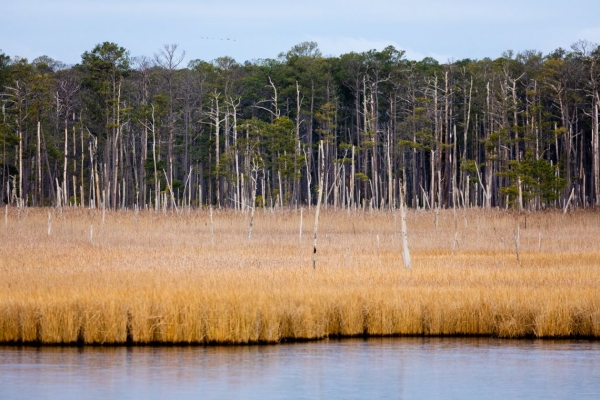As rising sea levels cause marshes to move inland in six mid-Atlantic states, the coastal zone will not continue to serve as a carbon sink but release more carbon into the atmosphere, a new modeling study led by researchers at Duke University finds.
Earlier estimates focused on the potential for an expanded area of coastal marshes to capture more carbon, removing it from the atmosphere where it acts as a greenhouse gas in the form of carbon dioxide. But as coastal marshes invade low-lying forests and freshwater wetlands, the loss of trees and decomposition will release more carbon into the air than can be captured by the marshes, further contributing to global climate change.
The study was conducted in consultation with natural resource agencies in North Carolina, New York, New Jersey, Delaware, Maryland and Virginia. Maps of predicted changes in coastal habitats and carbon due to sea level rise were created to support coastal planning.
“This research and our conversations with the states raise lots of questions about options for managing coastal landscapes given these changes, and emphasizes the importance of reducing greenhouse gases and sea level rise overall, because that's the main driver of all of this,” said Katie Warnell, lead author of the study and a policy associate at Duke’s Nicholas Institute for Environmental Policy Solutions. “Carbon is one piece of the picture. There are many other reasons to keep marshes around, including coastal protection and nursery habitats for fisheries. We need to weigh all of these different factors in making decisions about managing our coastal habitats.”
Read more at Duke University
Image: The study area of mid-Atlantic coastlines includes the Blackwater National Wildlife Refuge in Dorchester County, Maryland. (Credit: Chesapeake Bay Program)


